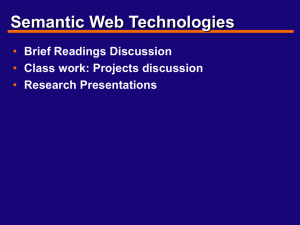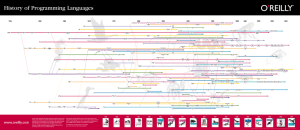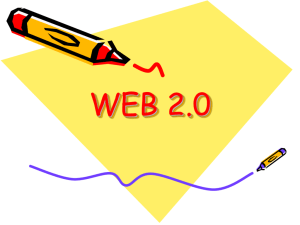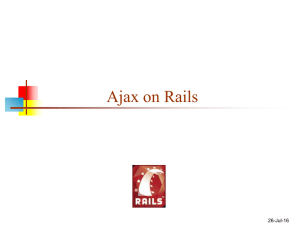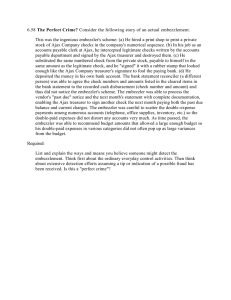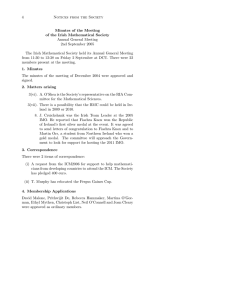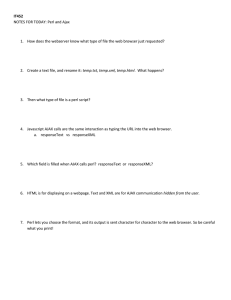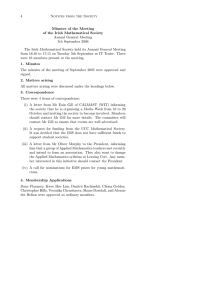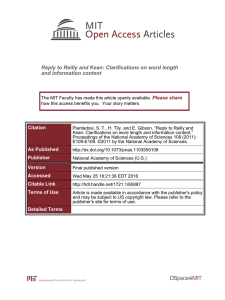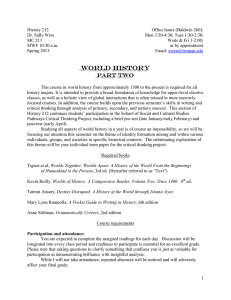Web 2.0?
advertisement
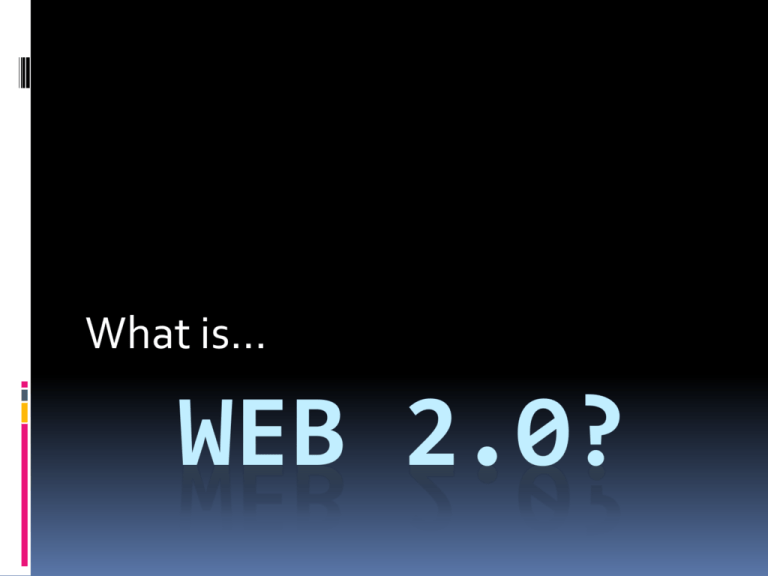
What is… WEB 2.0? A Little History… The term “Web 2.0” was familiarized when Tim O’Reilly hosted the first Web 2.0 conference in 2004 This Link (a characteristic of Web 2.0) includes some footage of the conference So what is it? Web 2.0 isn’t a thing, it’s a state of mind. It’s also a Buzzword, but Buzzwords have their uses: Good for non-technical people Eases communication A good way to promote a group of technologies Web 2.0 also… Provides a service, not a product (infoware not software) Encourages user contribution (reviews, comments) Makes it easy to re-use and re-mix Provides community and sense of ownership as well as customer self-service So what is it…really? Web 2.0 is associated with web applications that encourage interactive information sharing. Web 2.0 sites provide their users with dissemination capabilities, information storage and creation In a nutshell, Web 2.0 allows users to do more than just retrieve the information or message. Document Delivery vs Platforms The web is changing from a document delivery system to an application platform The Web as a platform: Simplifies distribution Easy way of maintaining code Faster speed to market Share data across devices So, what’s the difference? Web 1.0 refers to former business models (Encyclopedia Britannica) which was one way communication Web 2.0 offers two way communication between users and businesses and users can often build your business (Twitter and WordPress) So, what’s the difference again? O’Reilly compared Web 1.0 to Google which is now a business and not so based on the creation of software (browsers) but instead provides services based on data (users) Instead of just having users receive information, they can build upon it (Wikipedia) O’Reilly’s Web 2.0 vs Web 1.0 example Web 1.0 Web 2.0 DoubleClick Google AdSense Ofoto Flickr Akamai BitTorrent Mp3.com Napster Britannica Online Wikipedia Personal Websites Blogging Evite Upcoming.org Domain name speculation Search engine optimization Page views Cost per click Publishing Participation CMS (Content Management Systems) Wikis Directories Tagging Stickiness Syndication Characteristics of Web 2.0 Rich User Experience (interaction) User Participation (input) Dynamic Content (many authors, not just one) Metadata (clarification) Web standards and scalability (google analytics) Participation (output) How do I know it’s Web 2.0? Web 2.0 sites typically include some, if not all, of the following features: Search (finding info through keywords) Links (guides to related info) Authoring (the ability to create and update = collaborative work) Tags (filtering by words) Extensions (web applications = document server) Signals (RSS feeds) Core Competencies of Web 2.0 Companies Services, not packaged software, with cost effective scalability Control over unique, hard-to-create data sources that get richer as more people use them Trusting users as co-developers Harnessing collective intelligence Leveraging the long tail through customer selfservice Lightweight user interfaces, development models, AND business models Web 2.0 = Ajax Ajax is shorthand for asynchronous JavaScript + XML (say that 3x fast) A group of interrelated web development techniques used on the client-side to create interactive web applications. With Ajax, web applications can retrieve data from the server without interfering with the display and behavior of the existing page The evolution… In lay mans terms, this is the present and future of the World Wide Web.
